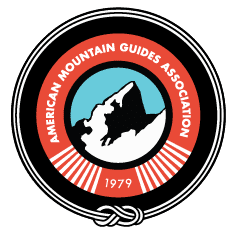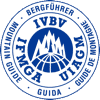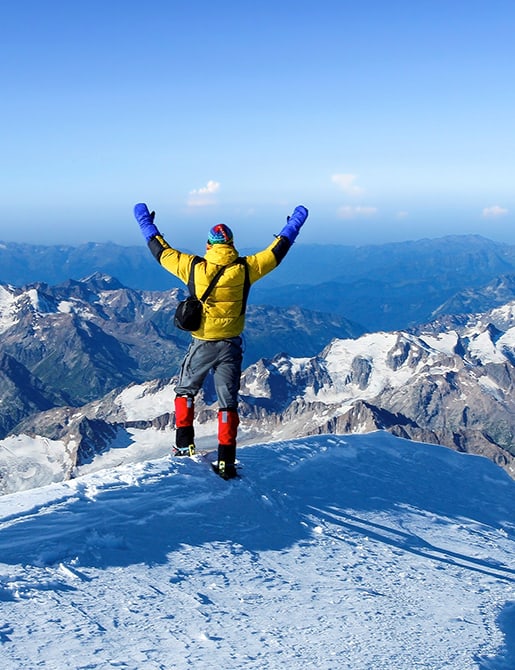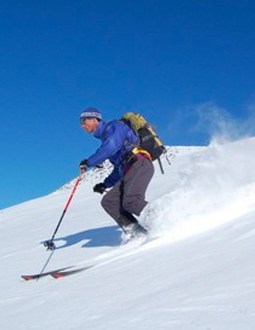


The Summer Haute Route from Chamonix to Zermatt is arguably one of the most scenic and famous multi-day hikes in all of the Alps.
The Summer Haute Route from Chamonix to Zermatt is arguably one of the most scenic and famous multi-day hikes in all of the Alps. Our suggested itinerary follows the classic "Ski Haute Route" for some of the route, but stays a bit further north in non glaciated terrain for a large portion. For well over a hundred years, "walkers" from all over the world have made the trek from the base of Mont Blanc to the incomparable view of the Matterhorn. This demanding, varied route wanders deep among high mountain glaciers and passes, as well as passing through traditional alpine villages and towns providing a huge variety of terrain, culture and scenery.
No climbing experience required
Very good physical fitness; you should be able to hike or climb for 5 to 6 hours with a pack varying from 20 to 40 lbs. and ascend 3,000 to 4,000 feet of vertical gain per day for several consecutive days.
Day 1: Argentiere – Champex: We will take a taxi up to the Col de la Forclaz and hike up to the spectacular Col des Ecandides at 2665 meters. From here we will hike down the Val d’Arpette down to the village of Champex. Hiking time about 6 hours.
Day 2: Champex- Prafleuri: As early as possible we will transfer to Verbier, take the lift system up into the ski area and start our hike to the Cabane de Prafleuri. The trek heads into a very wild and remote section, but the views are stunning as you cross three major mountain passes (cols) today on route to the Prafleuri. First is the Col de la Chaux, then it's up to the Col du Louvie with the pretty mountain hut nestled against the lake shore below, and then the final section is up over the Col Prafleuri. The hut comes in to view far below. Hiking time about 7 to 8 hours.
Day 3: Prafleuri - Arolla. After crossing the Col des Roux, you trek past the Dix lake to the hut of the same name at its head. Here there is the chance of your first view of the Matterhorn. From the Dix you cross the valley and take one of the passes that leads across to Arolla. We will stay the night in one of the hotels in the centre of the village. Hiking time about 7 to 8 hours.
Day 4: Arolla – Cabane de Bertol. We will leave Arolla (2000 meters) early in the morning and start the ascent to the Cabane de Bertol at 3311 meters. This day is very spectacular and covers a lot of vertical gain. The location of the Bertol hut is certainly worth the effort. Hiking time about 5 to 6 hours.
Day 5: Cabane de Bertol – Schoenbiel hut. This may very well be the most high-alpine section of the week and we will spend the entire day on glaciated terrain. From the Bertol we will hike up to the Col de la Tete Blanche (3650 meters) and then start the long descent down the Schoenbielhut (2694 meters). The looming presence of the Matterhorn West and North Face will dominate the ambience of the day. Hiking time about 7 hours.
Day 6: Schoenbiel hut – Zermatt. Good news. No more uphill travel. We will simply follow the moraine above the Schoenbielgletscher towards Stafelalp and then out to Zermatt. Hiking time about 3 to 4 hours.
The best way to get to Chamonix is via bus from the Geneva Airport. There are several private companies that provide transportation from the Geneva airport to Chamonix. These buses or minivans leave from right outside the baggage claim area.
Your guide will come and meet you at your hotel in the late afternoon of Sunday before the trip start. We will conduct a quick equipment check and get you fully briefed for the next day.
It is better to wait until you get to Chamonix. That way you pay the exchange rate only once (as opposed to from dollars to Swiss Francs then to Euros). So wait until you are in France to change Dollars into Euros, but we recommend changing dollars into Swiss Francs in Geneva, as the majority of the trip actually takes place in Switzerland. In fact all the huts we are staying in are Swiss huts. If you do not want to change too much money into Swiss Francs right away, you can also get more money in Verbier on the second day of the trip.
It is extremely important that you stay properly hydrated and fluids are not cheap in high alpine huts. Count on spending about sfr. 15 to 20 per day on tea, water, beer and wine for sure. Of course there are other things that will tempt you such as chocolate, cakes, sandwiches, and the undeniable Rosti. All things added up, sfr. 200 for the week should probably do it.
You have options. You can carry all your lunch food (as it is not included in the trip cost), but hardly anyone does it. Most people buy some bread, cheese, dried meat, sausage, chocolate, trail mix etc. in Chamonix that will last for a couple of days. Then they repeat this in Verbier and end up supplementing it with some items they buy at the huts later in the week. You can also have the hut keeper prepare a lunch packet. They are good, but pretty pricey at about $12 per lunch.
This transfer will be organized by Pro Guiding Service and is included in the trip. Please make sure that your extra luggage consists of one manageable piece.
Yes, we speak French, German and Italian. Speaking the right language or even better the right dialect does not only simplify logistics, but it opens a lot of doors to extra favors.
For the most part, you have to buy water in the huts and it is not cheap (about sfr10 for a big bottle). In the morning they will fill up your water bottle with tea or water. There will be water along the way, but you might have to purify it. There are some pretty cool products ranging from tablets to filters (which you are responsible for bringing if you choose that route). You will pass through a few towns and water is very cheap there in grocery stores. Estimate that you will need about 2 liters per day on the trail.
A lot of people do, but you can also buy a lot of those things in Chamonix.
This is hard to say, but it could range between 80 F and freezing depending on conditions, time of day and elevation of the trip. You are moving between 5000 and 11,000 feet, so it is safe to say that there might be quite a range. If you pack according the packing list, you should be fine.
About 20 to 25 pounds max.
We strongly advise against this, since our Summer Haute Route still travels over several glaciers along the way. Some of these glaciers are crevassed and located at over 10000 feet of elevation. The chance that you will be wearing crampons at times are very good, so a sturdy hiking boot or light mountaineering boot is recommended.
There is no need for that. You will be able to buy a ticket at the counter in Zermatt and just walk onto the train. The travel time from Zermatt to Geneva is about 3.5 hours.
If you intend to do further travel in Switzerland , you might consider purchasing the Halfprice Pass from the Swiss Railway System.
Although tipping is not a requirement, it is considered standard practice in the guiding industry and is appreciated by our guides. We generally recommend roughly 10%-15% of your course or trip cost or a flat amount that you are comfortable with.

